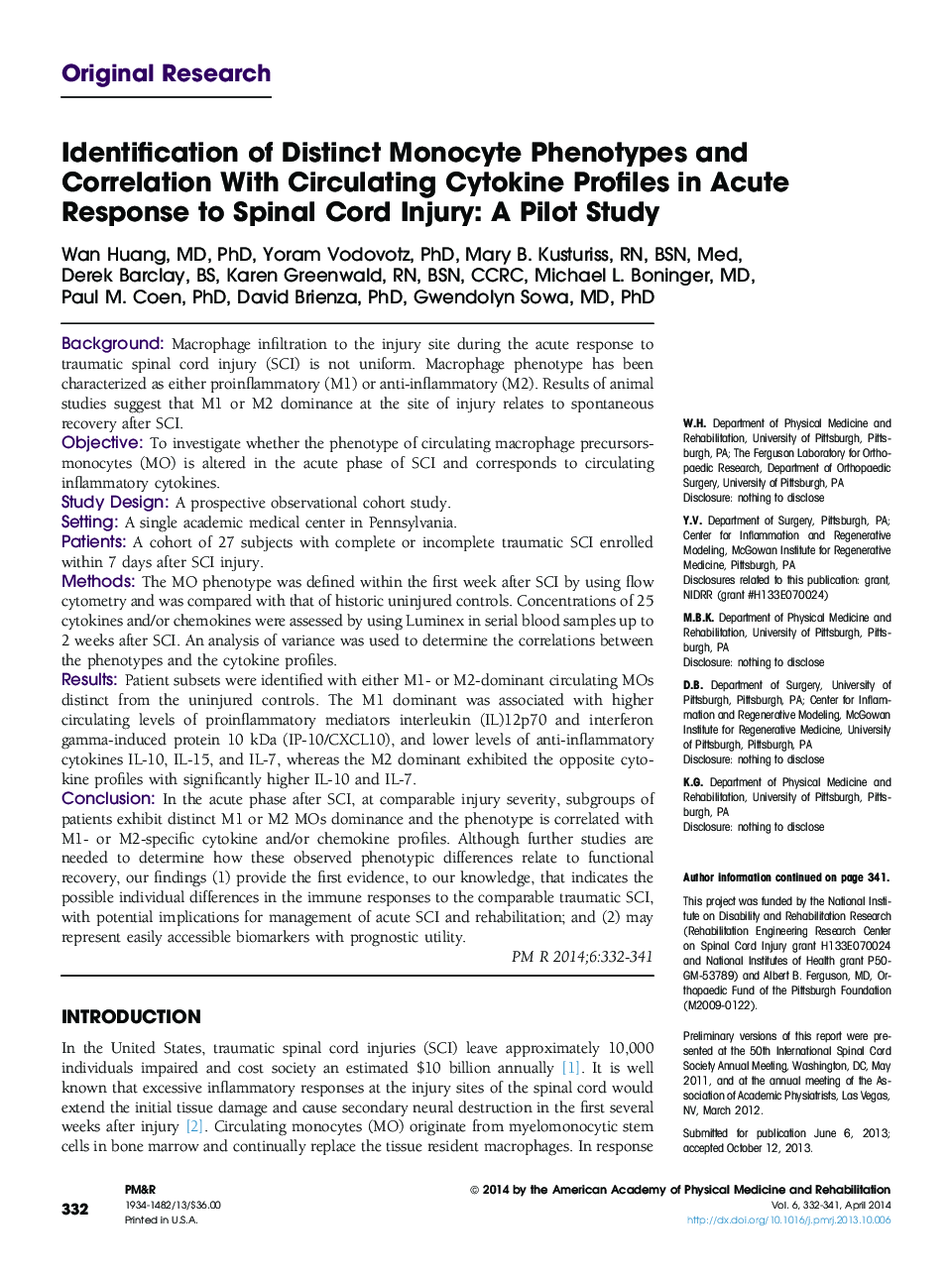| کد مقاله | کد نشریه | سال انتشار | مقاله انگلیسی | نسخه تمام متن |
|---|---|---|---|---|
| 5874242 | 1144730 | 2014 | 10 صفحه PDF | دانلود رایگان |
BackgroundMacrophage infiltration to the injury site during the acute response to traumatic spinal cord injury (SCI) is not uniform. Macrophage phenotype has been characterized as either proinflammatory (M1) or anti-inflammatory (M2). Results of animal studies suggest that M1 or M2 dominance at the site of injury relates to spontaneous recovery after SCI.ObjectiveTo investigate whether the phenotype of circulating macrophage precursors-monocytes (MO) is altered in the acute phase of SCI and corresponds to circulating inflammatory cytokines.Study DesignA prospective observational cohort study.SettingA single academic medical center in Pennsylvania.PatientsA cohort of 27 subjects with complete or incomplete traumatic SCI enrolled within 7 days after SCI injury.MethodsThe MO phenotype was defined within the first week after SCI by using flow cytometry and was compared with that of historic uninjured controls. Concentrations of 25 cytokines and/or chemokines were assessed by using Luminex in serial blood samples up to 2 weeks after SCI. An analysis of variance was used to determine the correlations between the phenotypes and the cytokine profiles.ResultsPatient subsets were identified with either M1- or M2-dominant circulating MOs distinct from the uninjured controls. The M1 dominant was associated with higher circulating levels of proinflammatory mediators interleukin (IL)12p70 and interferon gamma-induced protein 10 kDa (IP-10/CXCL10), and lower levels of anti-inflammatory cytokines IL-10, IL-15, and IL-7, whereas the M2 dominant exhibited the opposite cytokine profiles with significantly higher IL-10 and IL-7.ConclusionIn the acute phase after SCI, at comparable injury severity, subgroups of patients exhibit distinct M1 or M2 MOs dominance and the phenotype is correlated with M1- or M2-specific cytokine and/or chemokine profiles. Although further studies are needed to determine how these observed phenotypic differences relate to functional recovery, our findings (1) provide the first evidence, to our knowledge, that indicates the possible individual differences in the immune responses to the comparable traumatic SCI, with potential implications for management of acute SCI and rehabilitation; and (2) may represent easily accessible biomarkers with prognostic utility.
Journal: PM&R - Volume 6, Issue 4, April 2014, Pages 332-341
